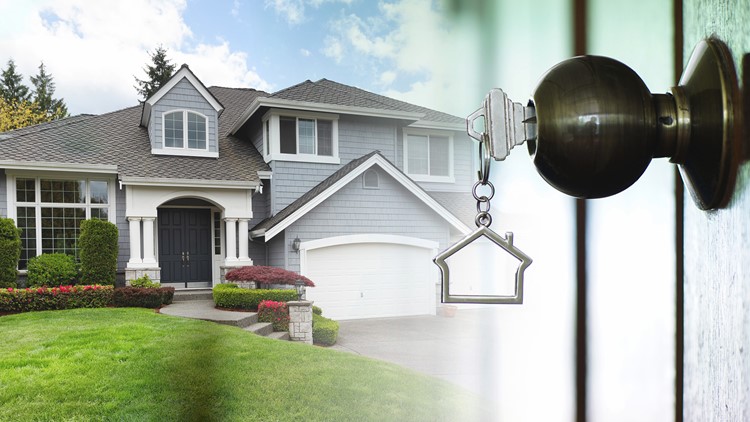BOISE, Idaho — Idaho’s economy continues to be strong, but the effects of the rising cost of living — in the Treasure Valley in particular — should not be counted out, an economic forecaster said Friday.
Jordan Prassinos, an economic forecaster with Idaho Power, briefed the Idaho Legislature’s Joint Finance-Appropriations Committee on the Gem State’s economic outlook ahead of the 2020 legislative session.
Prassinos pointed to numerous data points showing Idaho is topping the charts nationwide, with the fastest-growing home prices of the top 100 populated cities in the nation and a continued influx of new residents.
He cautioned legislators that the state’s lower wages, in comparison to the rest of the country, could hurt the state in years to come.
“Idaho is the best place to raise a family, best place to walk a dog and it is a wonderful place for those things, but more importantly, Idaho’s economy is first in the nation for a lot of hard economic data as well,” he said.
Idaho has boasted the country’s top migration rate for three years in a row, the state’s job-growth rate is currently holding strong at 3%, and the state has seen personal income increase 5.5% since 2018, he said.
However, housing prices and income are growing at different rates, which Prassinos described as possible “chinks in the armor” that Idaho’s legislators should be watching for.
Prassinos said Idaho’s wages have lagged behind the rest of the country by roughly 15% for the past 20 years, meaning, for every dollar the average U.S. resident makes, an Idahoan makes 85 cents. For a long time, this was not an issue due to the low cost of living, particularly in regard to mortgage and rent prices, but the population boom has jacked up housing prices and eroded that affordability, he said.
“We saw 15% appreciation in home values, which means cost of living is no longer all that positive,” Prassinos added. “It’s not a positive boon for the state of Idaho.”
On Thursday, Craig Shaul, research supervisor for the Idaho Department of Labor, told the committee Idaho’s 2018 median wage, which was released in May of 2019, was $34,260, ranking 43rd in the nation. It’s the lowest of surrounding states, and is $820 below the next-lowest state, Montana.
That is in comparison to the median home value of $275,100 statewide. The increased cost of living is even more intense in densely populated Boise, where rents rose 30% between 2015 and 2018, according to a study conducted by Burlington Associates. Average home prices in Ada County continue to set records, which hit a high of $359,000 in November 2019.
Although housing prices continue to rise, Prassinos said there was some softening in the rate of increase throughout 2019. That mirrors the trends in other Mountain West cities such as Salt Lake City, Spokane, and Reno. However, he said high-priced West Coast cities like Seattle and San Jose, California, have seen their home price values dropping in the same time period, so Boise is not exactly following the trajectory of those areas.
The growth in home values is not just the story in the Treasure Valley. Prassinos also presented the home value growth for Pocatello, Idaho Falls, Twin Falls, and Coeur d’Alene, which all showed nearly the same growth pattern. Home values in Idaho Falls and Pocatello grew slightly more than Boise’s in the second half of 2019.
As far as the possibility of a future recession, Prassinos said how much Idaho would be impacted if there were to be a recession depends on the type of hit the national economy takes. He said Idaho was not deeply impacted by the dot-com bubble bursting in 2000 because the state didn’t have many tech jobs, but the Great Recession powered by the crash of the housing market hurt the Gem State because of the state’s reliance on construction jobs to power the economy.
He said Idaho becomes especially susceptible to housing-market related recessions if 8% or more of the labor force works in construction, but for now, the state has not crossed that threshold.
MORE GROWING IDAHO: ‘Just barely making it’: Boise residents struggle to stay afloat amid rising rents and plunging vacancy rates
“When we go above that point, we feel like there is some additional exposure and we may get slammed down harder than the U.S. (in case of a recession),” he said. “As of 2019, we have not eclipsed that point.”
Prassinos said he could not predict exactly when the economy might contract again, but he pointed out that the economic growth since the Great Recession a decade ago has been the longest the nation has seen in decades.
“What we are currently in is the longest (period of economic growth) in modern history,” he said. “It’s safe to say this is the longest anyone in this room has ever experienced.”
More from our partner Idaho Press: A bill to legalize hemp in Idaho is coming back in 2020
Watch more 'Growing Idaho':
See the latest growth and development news in our YouTube playlist:



